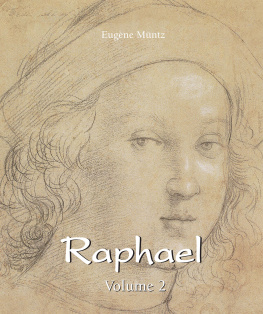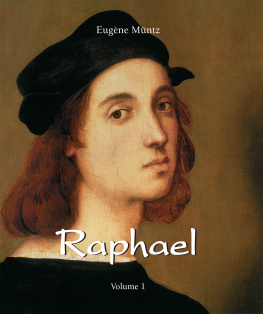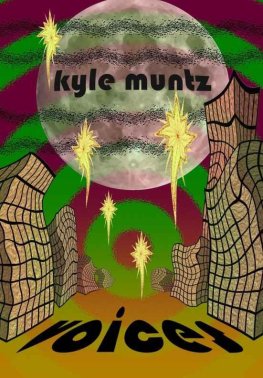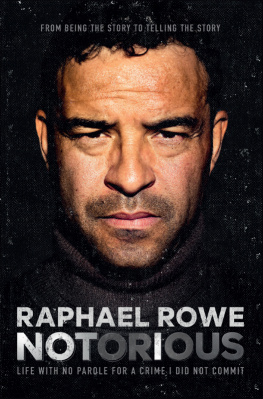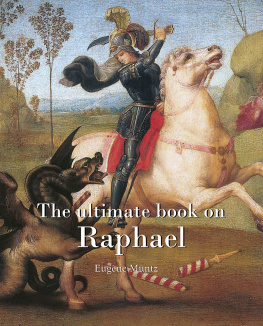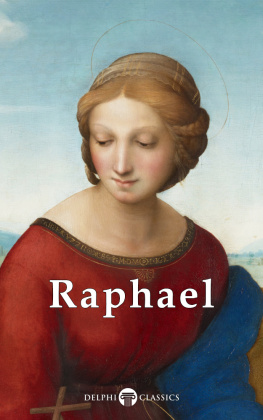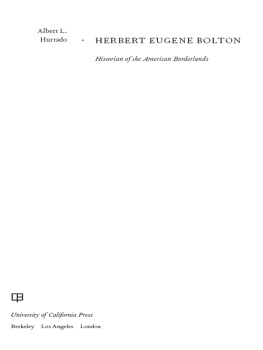Muntz Eugene - Raphael. Volume 2
Here you can read online Muntz Eugene - Raphael. Volume 2 full text of the book (entire story) in english for free. Download pdf and epub, get meaning, cover and reviews about this ebook. City: New York;USA, year: 2018, publisher: Parkstone International, genre: Detective and thriller. Description of the work, (preface) as well as reviews are available. Best literature library LitArk.com created for fans of good reading and offers a wide selection of genres:
Romance novel
Science fiction
Adventure
Detective
Science
History
Home and family
Prose
Art
Politics
Computer
Non-fiction
Religion
Business
Children
Humor
Choose a favorite category and find really read worthwhile books. Enjoy immersion in the world of imagination, feel the emotions of the characters or learn something new for yourself, make an fascinating discovery.
- Book:Raphael. Volume 2
- Author:
- Publisher:Parkstone International
- Genre:
- Year:2018
- City:New York;USA
- Rating:3 / 5
- Favourites:Add to favourites
- Your mark:
- 60
- 1
- 2
- 3
- 4
- 5
Raphael. Volume 2: summary, description and annotation
We offer to read an annotation, description, summary or preface (depends on what the author of the book "Raphael. Volume 2" wrote himself). If you haven't found the necessary information about the book — write in the comments, we will try to find it.
Raphael. Volume 2 — read online for free the complete book (whole text) full work
Below is the text of the book, divided by pages. System saving the place of the last page read, allows you to conveniently read the book "Raphael. Volume 2" online for free, without having to search again every time where you left off. Put a bookmark, and you can go to the page where you finished reading at any time.
Font size:
Interval:
Bookmark:
Eugne Mntz
Raphael
volume 2

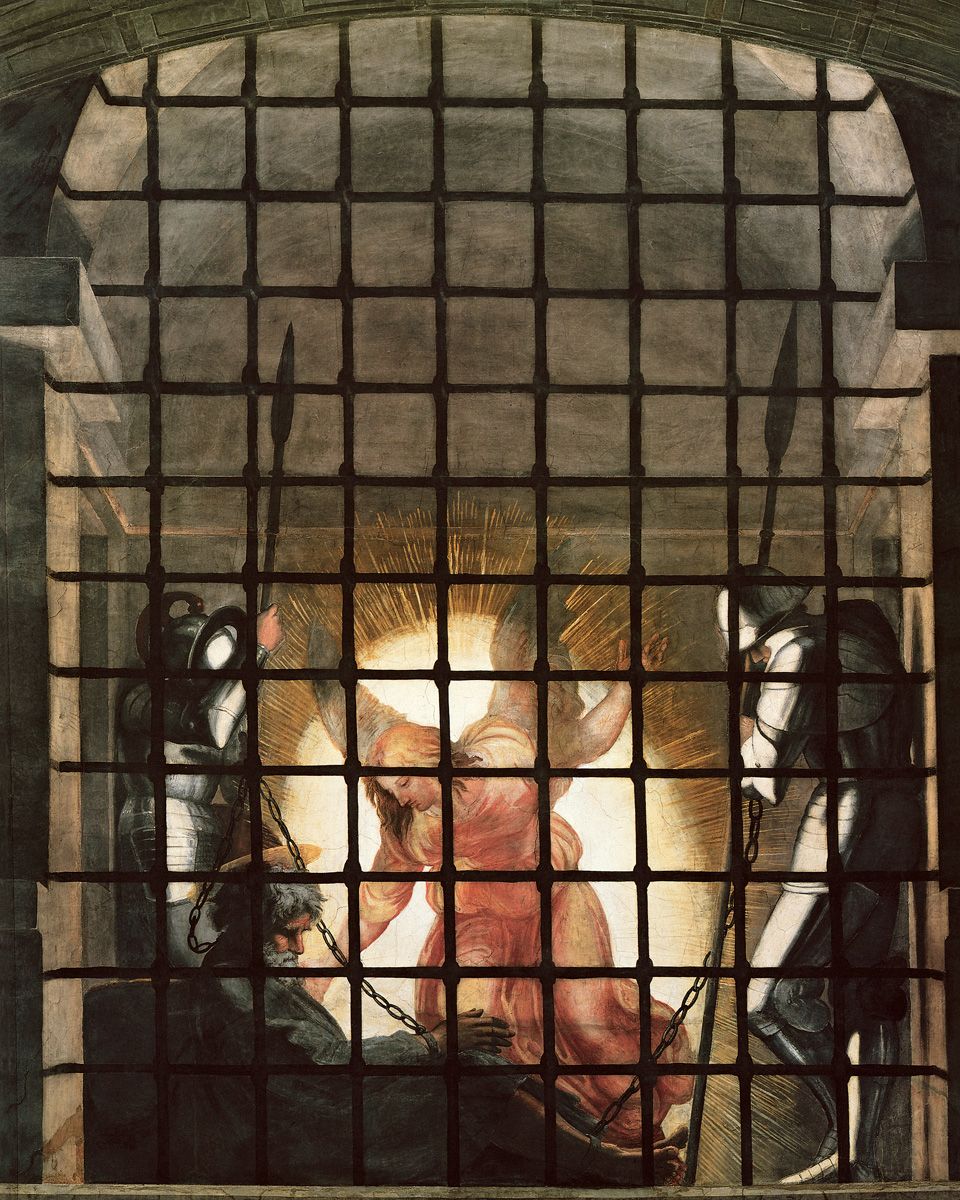
Liberation of St Peter (detail), 1512-1514. Fresco, width: 660 cm (base). Stanza di Eliodoro, Palazzi Pontifici, Vatican City.
Author: Eugne Mntz
Layout:
Baseline Co. Ltd
61A-63A Vo Van Tan Street
4 th Floor
District 3, Ho Chi Minh City
Vietnam
Confidential Concepts, worldwide, USA
Parkstone Press International, New York, USA
Image Bar www.image-bar.com
All rights reserved.
No part of this publication may be reproduced or adapted without the permission of the copyright holder, throughout the world. Unless otherwise specified, copyright on the works reproduced lies with the respective photographers, artists, heirs or estates. Despite intensive research, it has not always been possible to establish copyright ownership. Where this is the case, we would appreciate notification.
ISBN: 978-1-78525-712-4
Contents
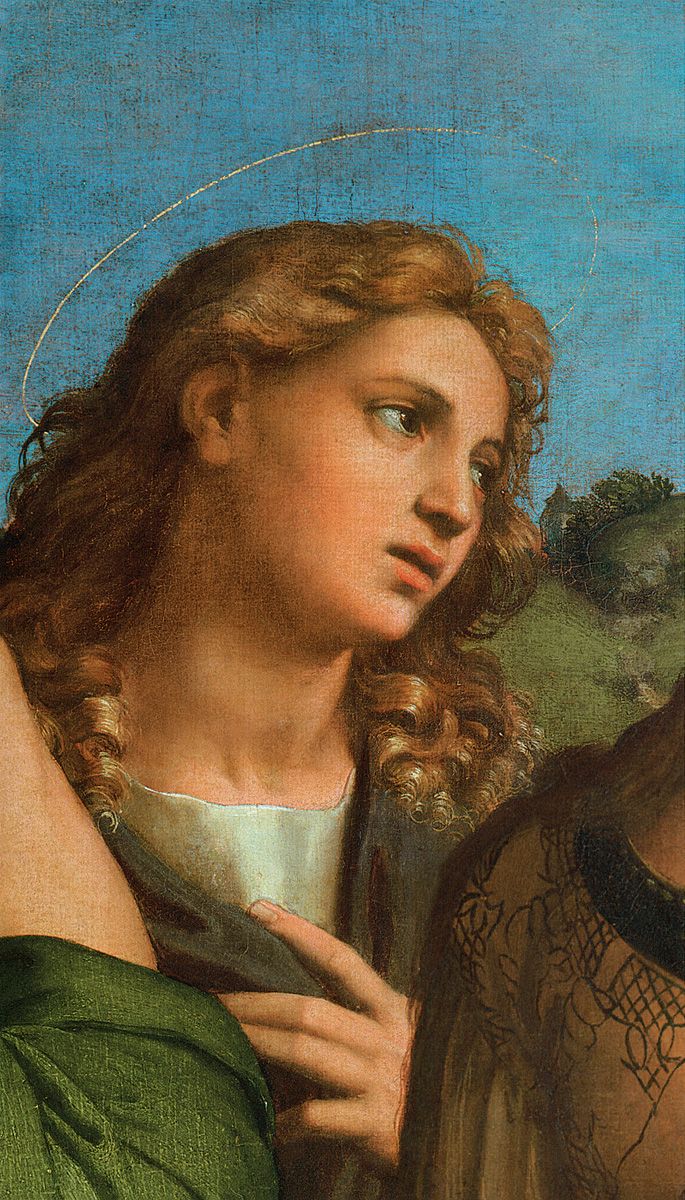
St John the Evangelist (detail from St Cecilia), 1513. Oil on wood, transferred onto canvas, 236 x 149 cm. Pinacoteca Nazionale di Bologna, Bologna.
In 1500 Raphael entered Peruginos studio, and just three or four years later his reputation was firmly established throughout Umbria. It was from here that in October of 1504 Raphael arrived in Florence, with the firm intention of tempting fortune in the art-capital of Italy. It is certain that but for the instruction he received there, he would not have become the unrivalled master of design who was worthy to work for Julius II and Leo X, and who founded the Roman school. In 1508, Raphael settled in the Eternal City. If the neighbourhood of Florence offered a more perfect image of grace, if the site of Umbria tended to meditation, here, in the Campagna broken by bold mountain spurs and bounded by the dark masses of Monte Gennaro, Monte Cavo and Soracte, the only impressions were severity and nobility. And yet, imposing as was the work of nature, that of man rivalled it: the immense line of aqueducts and the splendid row of tombs along the Appian Way stood out in the landscape which was so fit a dwelling for a sovereign people.
There was something very exclusive and absorbing about Umbrian art, for excursions into the secular world and above all into the ancient classics, were forbidden ground for its adepts not more through religious scruples than through want of knowledge. In Perugia he received his first lessons and became familiar with the methods of the Umbrian School. However, Perugia was not the only town in Umbria which assisted at the dbut of Raphael, for he received very cordial hospitality from Citt di Castello.
Umbria had become a second country for Raphael, the first being his native Urbino. While he underwent the influence due to the beauty of its sites and the mystic tendencies of its inhabitants, the Umbrians themselves became much attached to him, and it was owing to their spirit of generous piety that he was able to execute some of his most admired pictures. These encouragements were necessary to preserve him from the sufferings which, after the departure of his master, Perugino, he would have undergone, and Raphael showed his gratitude by remaining amid the Umbrian mountains until he went to reside at Rome in 1508.
If he still adhered to the types peculiar to the Umbrian school, especially in the Madonnas, it was because Umbria itself supplied him with a number of these soft and pensive countenances in which the depth of religious contentment stood instead of beauty. For a spiritualist like him, the painting of the soul was a nobler task than the painting of the body. There is already a good deal of landscape in these pictures, and in the background of the Conestabile Madonna (vol. 1, p. 35), the chain of mountains was painted from nature in the neighbourhood of Perugia. Raphael had, perhaps, been to visit Lake Trasimene, for in the perspective may be seen a broad expanse of water upon which fishermen are rowing a boat. In his first landscape efforts, Raphael, like Perugino, endeavours to substitute simplicity of outline and breadth of design for the minuteness and the aridity of the Umbrian painters.
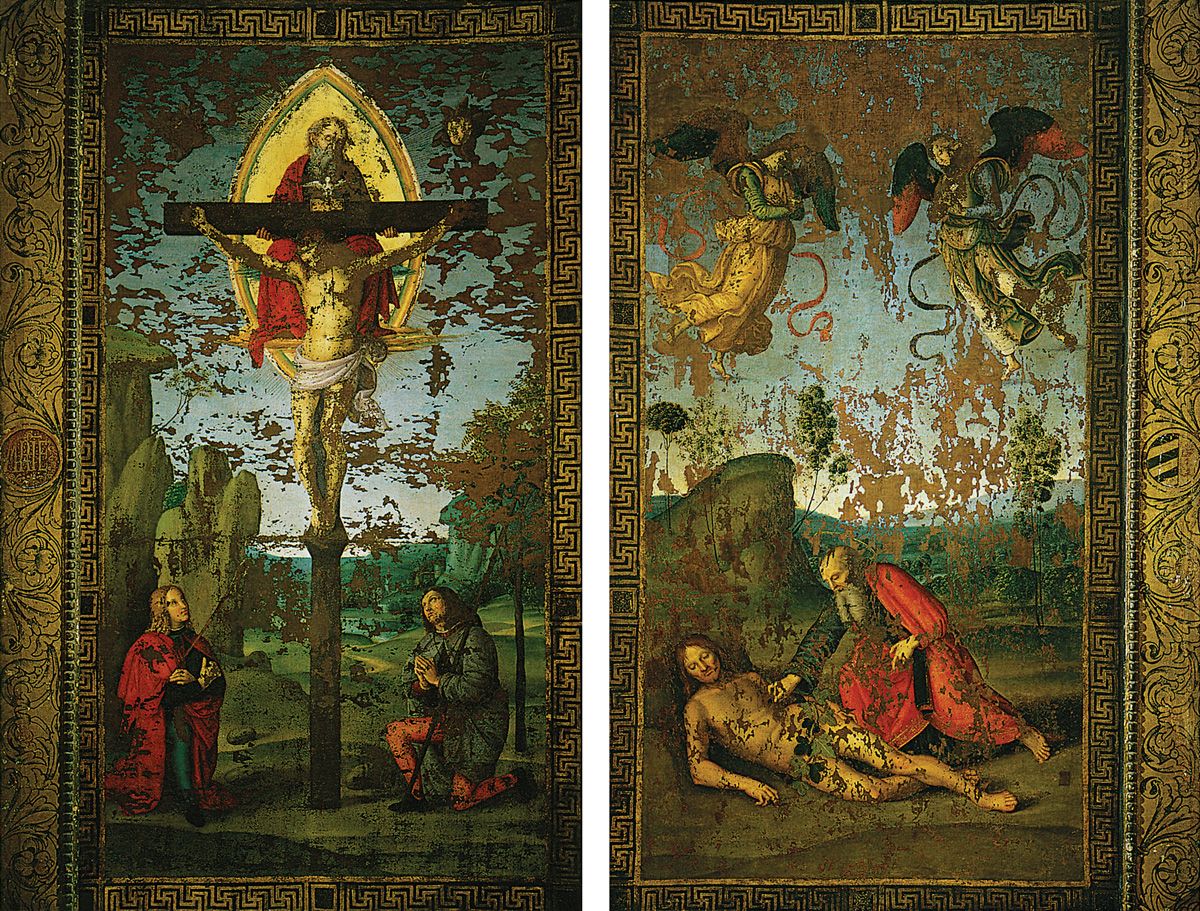
Trinity Banner: The Holy Trinity with St Sebastian and St Roch, c. 1499. Oil on canvas, 166 x 94 cm. Pinacoteca Comunale, Citt di Castello
This banner is still in existence, but in a state of ruin. It has been removed from the Church of the Trinity, for which it was painted, to the town gallery of Citta di Castello. Raphael did not deem it beneath his dignity to accept this order, knowing that the most illustrious painters were glad to paint those banners which held the place of honour in the processions, and which were generally as well-paid as oil paintings. The Umbrian school had, so to speak, the monopoly of them, and Perugino had set his pupil the example by painting fourteen small standards for the Panicale Church, in which they were used for the Corpus Domini procession.
On one side of the banner Raphael has represented God the Father seated on a cloud of glory and holding a crucifix in both hands, while above Him hovers the Holy Ghost. At the bottom are to be seen St Sebastian to the left and St Roch to the right, both on their knees, and with their eyes lifted towards God. Upon the reverse side God is depicted advancing towards Adam, who is asleep, while above are the figures of two angels. Passavant, from whom these details are taken, adds that the paintings are on slightly prepared canvas, and that they have a blue border ornamented with gilt tracery and palms; the letter R traced upon the hem of the garment worn by God stands for the signature, and the whole work, though conceived in the style of Perugino, has more breadth and grace, especially in regard to the landscape.
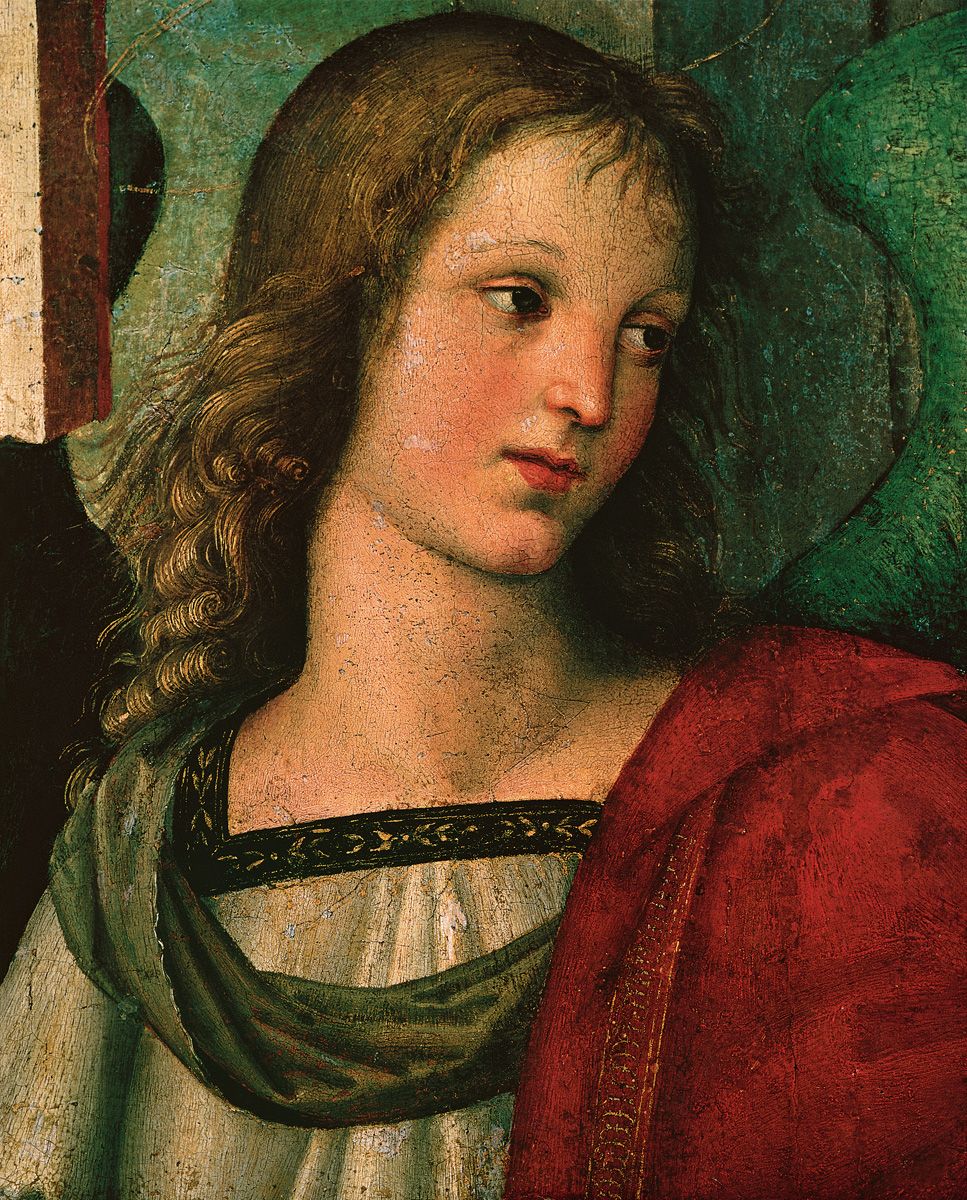
Bust of an Angel, detail from the Coronation of St Nicholas of Tolentino (from the Baronci Altarpiece), 1500-1501. Oil on wood, 31 x 27 cm. Pinacoteca Tosio Martinengo, Brescia
The Coronation of St Nicholas of Tolentino, executed for the church of Sant'Agostino, remained at Citt di Castello until 1789, when it was sold for the sum of 200 to Pope Pius VI. The picture was on panel, and difficult to move on account of its size; as it was only injured in the upper part, the Pope had it sawn in two, so as to make a complete picture of the lower part, while the figures in the higher part formed distinct pictures. These fragments were to be seen in the Vatican until after the entry of the French army into Rome in 1798, when they were undoubtedly sold by auction together with Raphaels tapestries and many other objects which have since disappeared.
Thanks to the descriptions of Lanzi and Pungileoni, and thanks also to two drawings preserved respectively at Oxford and Lille, it is possible to furnish a tolerably clear description of the picture. According to Lanzi, Raphael represented St Nicholas as being crowned by the Virgin and St Augustine, who are half-hidden in a cloud. Beneath St Augustines feet is the prostrate figure of the demon, and to the right and left are two angels holding inscriptions in honour of the saint. In the upper division is the majestic figure of the Almighty surrounded by a glory of angels. A sort of temple with pilasters charged with ornaments after the manner of Mantegna, forms a framework for the composition, and the draperies are of the period. It will be remarked in this drawing that Raphael, instead of representing the devil in his conventional hideousness, has given him the appearance of a dark figure.
Font size:
Interval:
Bookmark:
Similar books «Raphael. Volume 2»
Look at similar books to Raphael. Volume 2. We have selected literature similar in name and meaning in the hope of providing readers with more options to find new, interesting, not yet read works.
Discussion, reviews of the book Raphael. Volume 2 and just readers' own opinions. Leave your comments, write what you think about the work, its meaning or the main characters. Specify what exactly you liked and what you didn't like, and why you think so.

